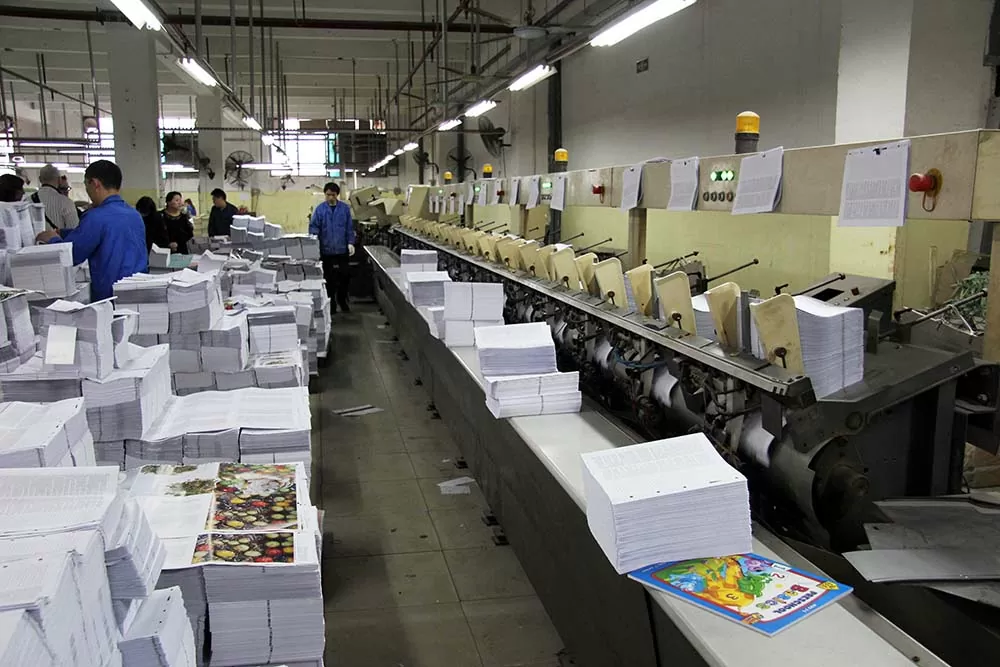PrintNinja - online printing made easy for creators
Collation/Sorting
The collation process starts with parent sheets being folded into signatures.
Parent sheets are large pre-cut pieces of paper, typically designed to fit 4-16 pages of a project on each side or 55 poker cards. They come in many weights and are often pre-coated with gloss or matte coating. One of the major factors in the cost of a printing project is how many parent sheets will be used, which is why certain standard sizes (8.5″x11″, 6″x9″, 9″x12″) and page counts (multiples of 16) are usually the most cost-effective choices since they can maximize the parent sheets used.
Once the printing is complete, the stacks of fully-printed and dried parent sheets are taken to be folded by the folding machine. Each parent sheet zooms through the machine one at a time entering into gates that are set to the proper fold size. A final fold is applied by a heavy arm, called the knife fold, that applies pressure on the fold line. The final project rolls out of the machine as a signature. The majority of projects are folded by these machines, although extremely large projects or those with unique requirements may occasionally be folded by hand.
There may be 1 or dozens of folded signatures that have to be gathered and bound for the final product. Once all the folding is complete the signatures are sent along for collation.
The collator stacks the signatures into the appropriate page order, and they are prepared for final binding. Based on your binding method, this will be either stapled (saddle stitching) or sewn (smyth sewing for perfect binding and case binding). The resulting new stack of ordered signatures is now called the book blocks.
Finally, the stacks of signatures are taken to the collation machine, which collates the separate signatures into their proper page order. The resulting new stacks of ordered signatures are now called book blocks.
Watch the Collation machine stack signatures in page order to make book blocks.
Collation machines like the one pictured below are large enough to handle books with many hundreds of pages, but books with only two or three signatures can also be collated by hand.

Domestically, since we’re not working with signatures, much of the collation occurs during the printing process. With either perfect binding or saddle stitching, the collating of interior pages is separated and ordered by the press, so the output stacks are appropriately prepared for the final binding. In both cases, the interior pages are fed into the binding machines with the covers separated out and then collated in with each set as the binding occurs.